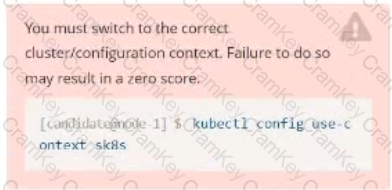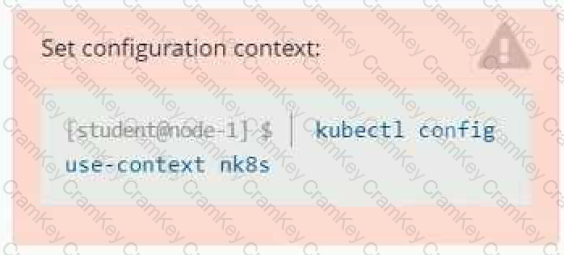Certified Kubernetes Application Developer (CKAD) Program
Last Update Jan 3, 2026
Total Questions : 33
To help you prepare for the CKAD Linux Foundation exam, we are offering free CKAD Linux Foundation exam questions. All you need to do is sign up, provide your details, and prepare with the free CKAD practice questions. Once you have done that, you will have access to the entire pool of Certified Kubernetes Application Developer (CKAD) Program CKAD test questions which will help you better prepare for the exam. Additionally, you can also find a range of Certified Kubernetes Application Developer (CKAD) Program resources online to help you better understand the topics covered on the exam, such as Certified Kubernetes Application Developer (CKAD) Program CKAD video tutorials, blogs, study guides, and more. Additionally, you can also practice with realistic Linux Foundation CKAD exam simulations and get feedback on your progress. Finally, you can also share your progress with friends and family and get encouragement and support from them.

Task:
The pod for the Deployment named nosql in the craytisn namespace fails to start because its container runs out of resources.
Update the nosol Deployment so that the Pod:
1) Request 160M of memory for its Container
2) Limits the memory to half the maximum memory constraint set for the crayfah name space.


Set Configuration Context:
[student@node-1] $ | kubectl
Config use-context k8s
Task
You have rolled out a new pod to your infrastructure and now you need to allow it to communicate with the web and storage pods but nothing else. Given the running pod kdsn00201 -newpod edit it to use a network policy that will allow it to send and receive traffic only to and from the web and storage pods.



Task:
Create a Deployment named expose in the existing ckad00014 namespace running 6 replicas of a Pod. Specify a single container using the ifccncf/nginx: 1.13.7 image
Add an environment variable named NGINX_PORT with the value 8001 to the container then expose port 8001

Task:
1) Create a secret named app-secret in the default namespace containing the following single key-value pair:
Key3: value1
2) Create a Pod named ngnix secret in the default namespace.Specify a single container using the nginx:stable image.
Add an environment variable named BEST_VARIABLE consuming the value of the secret key3.